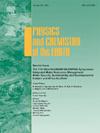The 2017 Lesvos (Midilli) earthquake (Mw 6.3): Earthquake hazard implications from source modeling, numerical waveform simulation with regional 1D velocity structure and static stress field
IF 3
3区 地球科学
Q2 GEOSCIENCES, MULTIDISCIPLINARY
引用次数: 0
Abstract
We investigate the earthquake hazard of Lesvos Island and the Turkish coast, considering the source mechanism and rupture propagation of the June 12, 2017 Lesvos (Midilli) mainshock (Mw 6.3), its numerical waveform simulations with regional new 1D deep velocity structures, relocated seismicity, and crustal stress loading due to the destructive earthquakes. The teleseismic body waveform inversion indicates that the strike, dip, and rake of the fault are 127°, 47°, and −97°, respectively. The depth is 9 km, and the seismic moment is 3.4 × 1025 dyne cm. The mainshock ruptures a 12 × 15 km2 area with a maximum 1.9 m slip and 3.4 MPa average stress drop. The previous rupture models are evaluated with simulated broadband (0.05–10 Hz) ground motions based on the discrete wavenumber method, considering shallow soil amplifications. The S-wave velocity models used in the simulations between the mainshock and stations are defined with the multiple-filter method. Our bilateral rupture propagation model gives better fits for the waveform arrivals and Fourier spectrum. The waveforms’ frequency with the highest horizontal amplitude is ∼3 Hz, which agrees with the soil fundamental frequency in Vrissa village. It is concluded that the damage in Vrissa is caused by the soil structure, not rupture propagation. The earthquake clusters in the north and south of Lesvos agree with a right-lateral synthetic shear if the Psara-Lesvos and Agia-Paraskevi faults are considered the principal displacement zone of a SW-NE right-lateral strike-slip shear zone. The results infer the possibility of continuing the earthquake hazard for Lesvos Island and the western coast of Türkiye.
2017年Lesvos (Midilli)地震(Mw 6.3):震源建模、区域一维速度结构和静态应力场数值波形模拟的地震危险性
研究了2017年6月12日Lesvos (Midilli)主震(Mw 6.3)的震源机制和破裂传播、具有区域新一维深部速度结构的数值波形模拟、重新定位的地震活动性以及破坏性地震引起的地应力加载,探讨了Lesvos岛和土耳其海岸的地震危险性。远震体波形反演表明,断层走向为127°,倾角为47°,前倾角为- 97°。震源深度9 km,地震矩3.4 × 1025达因cm。主震破裂面积为12 × 15 km2,最大滑移1.9 m,平均应力降3.4 MPa。基于离散波数法,在考虑浅土层放大的情况下,利用模拟宽带(0.05 ~ 10 Hz)地震动对上述断裂模型进行了评价。用多重滤波方法定义了主震与台站之间的横波速度模型。我们的双侧断裂传播模型对波形到达和傅立叶谱有较好的拟合。水平幅值最高的波形频率为~ 3 Hz,与Vrissa村土壤基频一致。结果表明,裂缝的破坏是由土体结构引起的,而不是由断裂扩展引起的。如果Psara-Lesvos断裂和Agia-Paraskevi断裂被认为是西南-东北向右走滑剪切带的主要位移带,那么Lesvos北部和南部的地震群符合右旋合成剪切带。研究结果表明,莱斯沃斯岛和冰岛西海岸可能会继续发生地震。
本文章由计算机程序翻译,如有差异,请以英文原文为准。
求助全文
约1分钟内获得全文
求助全文
来源期刊

Physics and Chemistry of the Earth
地学-地球科学综合
CiteScore
5.40
自引率
2.70%
发文量
176
审稿时长
31.6 weeks
期刊介绍:
Physics and Chemistry of the Earth is an international interdisciplinary journal for the rapid publication of collections of refereed communications in separate thematic issues, either stemming from scientific meetings, or, especially compiled for the occasion. There is no restriction on the length of articles published in the journal. Physics and Chemistry of the Earth incorporates the separate Parts A, B and C which existed until the end of 2001.
Please note: the Editors are unable to consider submissions that are not invited or linked to a thematic issue. Please do not submit unsolicited papers.
The journal covers the following subject areas:
-Solid Earth and Geodesy:
(geology, geochemistry, tectonophysics, seismology, volcanology, palaeomagnetism and rock magnetism, electromagnetism and potential fields, marine and environmental geosciences as well as geodesy).
-Hydrology, Oceans and Atmosphere:
(hydrology and water resources research, engineering and management, oceanography and oceanic chemistry, shelf, sea, lake and river sciences, meteorology and atmospheric sciences incl. chemistry as well as climatology and glaciology).
-Solar-Terrestrial and Planetary Science:
(solar, heliospheric and solar-planetary sciences, geology, geophysics and atmospheric sciences of planets, satellites and small bodies as well as cosmochemistry and exobiology).
 求助内容:
求助内容: 应助结果提醒方式:
应助结果提醒方式:


